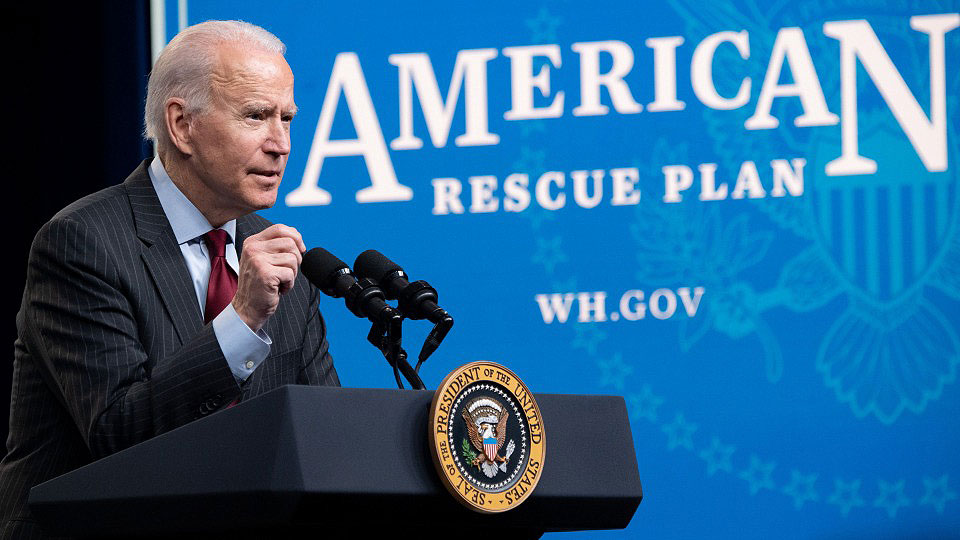American Rescue Plan brings significant relief to our communities
American Rescue Plan brings significant relief to our communities
On March 11, President Biden signed into law the $1.9 trillion American Rescue Plan Act, following passage in the U.S. House and Senate.
This landmark legislation brings significant relief to communities suffering effects of the ongoing pandemic, including an historic down payment on reducing child poverty.
What is in the American Rescue Plan?
This round of federal COVID-19 marks an incredible step in helping individuals and families across the country emerge stronger from this crisis. Some noteworthy provisions include:
- Direct Payments to Families: Most Americans will receive $1,400 per person, with amounts phasing out above certain income thresholds.
Expanded - Unemployment Insurance: Previously set to expire on March 14, current benefits and eligibility for UI is now extended through September 6. The Act also includes a waiver of federal taxes on 2020 benefits — up to $10,200 for certain incomes.
- Child Tax Credit/Child Allowance Improvements: One of the most significant anti-poverty measures advanced in recent memory, the American Rescue Plan temporarily transforms the Child Tax Credit into monthly payments for families with kids and provides a structure akin to a basic income for children. This measure is expected to cut child poverty in half in the United States, including 52% among Black children, 45% for Latinx children and 61% for Indigenous children.
- Earned Income Tax Credit: Raises the EITC for workers without kids, and expands the age range of eligible workers without children to include some younger adults as well as people aged 65 and over.
- $10.4 billion to support agriculture, including $5 billion for Black farmers: These funds provide significant debt relief — along with grants, training, education and support in acquiring land. According to experts, this bill is the most significant legislation for Black farmers since the Civil Rights Act.
- $350 billion in state and local aid, clearing a path to recovery for hard-hit communities nationwide.
- The legislation also includes funding for vaccine distribution, schools and expanded childcare assistance to help families get back on track.
Direct Impact on Food Insecurity
The American Recovery Act also invests in the Supplemental Nutrition Access Program (SNAP) and other key anti-hunger programs, including:
- Extension of the existing 15% SNAP food assistance boost through September
- Extension of cash food assistance benefits (known as Pandemic EBT or P-EBT) into the next school year
- Adds funding to expand online food purchases with SNAP benefits (through platforms like Instacart and Amazon Fresh)
- Increases Women, Infants & Children (WIC) fruit and vegetable vouchers
- Invests in food assistance for seniors age 60+ through the Commodity Supplemental Food Program (CSFP)
- Adds funding to support nutrition programs for older adults and Native American communities under the Older Americans Act
Next Steps to #EmergeStronger
While there are many important wins in this relief package, we still have considerable work ahead to support all Americans facing hunger and its root causes as we recover and rebuild together. Among the measures we hope to see included in future federal relief packages:
- A $15/hour minimum wage, which was omitted from the original proposal for procedural reasons. Livable wages are the surest way to fight hunger and poverty.
- Relief and support for immigrant Americans. Despite a few marginal improvements in this relief package, many immigrant families continue to be left out of various types of assistance.
Learn more about how you can get involved and take action to create lasting policy change.
Federal action was long overdue — and still falls short of ending hunger in our communities. If you need food assistance, help is available!
Additional Coverage & Analysis
- NPR | Here’s What’s In The American Rescue Plan As It Heads Toward Final Passage
- FRAC | Hails Senate Passage of American Rescue Plan Act, Further Strengthening SNAP, Pandemic EBT, and Other Relief Provisions
- CBPP | Senate’s American Rescue Plan Would Dramatically Reduce Hardship, Begin to Set Stage for Stronger Recovery
